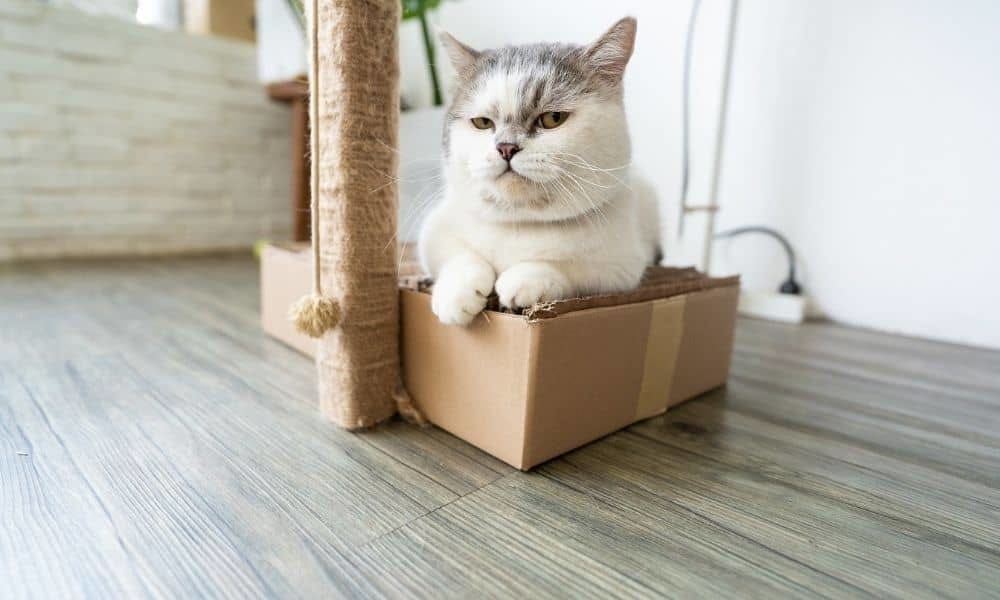How to teach a cat to do in its litter box: educational guide

If you're the proud “parent” of a new cat, the question of how to train a kitten to do its business in its litter box (and not in the middle of your living room) is probably at the forefront of your mind. your concerns. It may come as some relief to know that litter training is usually a fairly simple affair.

Many kittens arrive in their new home having already learned how to use a litter box from their mother, and even those who have not learned it are aided by a strong instinct to bury their needs after doing so. their little business. However, if your new kitten needs some guidance, the following steps should help.
Supplies you will need
For your cat to start developing good toilet habits, you will need a few supplies, including:
Litter boxes (at least two): It's a good idea to have one more litter box than the number of cats who will use it, so if this is your first cat, you'll want to start with two boxes . Place them in easy-to-reach places while still providing privacy for your cat. If they are too exposed, your cat may not feel safe enough to use them.

Cat litter: You'll find plenty of options, from inexpensive non-clumping clay litter to high-end eco-friendly options made from materials like pine pellets, recycled newspaper, and even wheat.
While many cats aren't very picky about the type of litter you use, some cats are very particular and won't use litter if they don't like its texture or smell. It's best to start with a standard, unscented clumping litter, and if you want to use something else, you can experiment with it once your cat has learned to use its litter.
Treats and toys: When you see your little furry friend using his box, reward him with a treat or some cat food. You can also use toys and verbal encouragement to help him form positive associations with using the litter box.
After a while, you will need to stop him from expecting a food-related treat every time he uses the box. What we recommend is to reduce the number of rewards gradually , until it stops completely.
How to litter box train a kitten

Follow these steps to train a kitten to use the litter box:
Show him the bins as soon as he arrives by placing him in them and letting him sniff and examine them. Be careful not to move the bins once you have shown them to him, so as not to confuse him.
Place your cat in one of the boxes immediately after meals and after waking up from a nap. If you notice that he is behaving as if he needs to go potty, which may include sniffing or squatting in a particular area, pick him up and put him in his toilet box. litter.

Reward him every time you see him using it. Praise him and give him a treat or toy. As we have already explained, you will decrease the rewards as more is acquired. We don't want a spoiled brat, do we? This could indeed be counterproductive.
Don't punish him or scold him if he has an accident. This will only lead to stress and anxiety, which could exacerbate the problem and make training more difficult. Cats do not associate punishment with the incident in question, which does not help to train them not to do it again in the future.
Cleaning and maintaining cat litter

It is important to take care of the litter box. Not only will this help eliminate the dreaded cat poop smell from your home, but it will also make using the box more pleasant for your cat.
Sweep the box daily to remove your kitten's deposits. Replace soiled litter as needed - usually when the litter no longer masks the odor.
Clean and disinfect the box when changing the litter. Use mild soap and water, or a solution of water and white vinegar. Do not use bleach, commercial disinfectants or other harsh chemicals, which could be harmful to your cat, harmful to aquatic environments, and no more effective than the natural solutions mentioned above.

Use an enzymatic cleaner to clean areas outside the crate where your kitten has had accidents. This type of cleaner will eliminate the odor which, if left untreated, could encourage him to continue pooping there.
Litter box catch-up classes for older cats
Typically, older cats are already accustomed to using a litter box when they come to live with you, but you may experience a problem with litter box training if the cat in question was previously an outdoor cat. Even so, cats have all the instincts to help them quickly understand what a litter box is for, but you have to help them.

So getting them used to the litter box may be the biggest challenge. In this case, we suggest filling the tray with outdoor soil , to start. As your cat gets used to going in the box, gradually replace more and more soil with cat litter to give him a chance to become familiar with the new surface.
“Troubleshooting” your cat
Some cats, as previously mentioned, can be quite picky about what conditions they are willing to go into. If your cat doesn't seem to get used to using the box, she may simply not like the size or shape of the box or the smell or texture of the litter.
If the box is covered, he may find it too confined, or he may feel too exposed and prefer a covered box. It could also be that he doesn't like the location of the bin, or that you simply need to empty it more often. You may need to experiment until you find the right combination of factors that makes her comfortable enough to use the box.

If it is an older cat, it may suffer from pain or joint stiffness which makes it difficult for it to access the box. Consider if the sides of the box are too high for him to climb comfortably , or if he has to climb stairs or jump on something to get to them.
Cats who have not yet been spayed or neutered may spray urine all over the house to mark their territory, even if they are completely accustomed to their litter box.
Often, being spayed or neutered tends to eliminate this behavior. Before making any decision on sterilization, inform yourself carefully because it is an important decision not only for you, but also and especially for your cat.

If your cat uses the tray regularly for a while and suddenly stops , or does so irregularly, there may be an underlying problem. Stress and anxiety can cause a cat to stop using the litter box, so ask yourself if there have been any major changes in its environment and talk to your veterinarian.
Often, stopping using the litter box can also be a sign of an underlying medical problem, such as a urinary tract infection , which could become serious if left untreated.
Teaching your cat to use the toilet: good or bad idea?

This may seem much more convenient to you, but is it really a good idea?
Here are the pros and cons of using “human” toilets for cats.
Cats are very intelligent animals and they can be trained to do many things. For example, you can teach your cat to give a high five. Or jumping through a hoop. Or playing the piano.
And you can also teach your cat to use a toilet instead of a litter box. But just because he can, should he do it? Here are the pros and cons of training your cat to use the toilet.

Why people like the idea of teaching a cat to use the toilet
Of course, all pet owners want to hit the easy button when it comes to pet care (in fact, we all want to hit the easy button on our own care).
If your cat pooped on the toilet (and flushed!) , you could avoid cleaning the litter box - which is no one's favorite chore. In fact, you wouldn't need to dedicate a single area of your home to installing a litter box. And goodbye to horrible smells, especially for those who live in an apartment. You would even save on the cost of purchasing the litter up front.
Disadvantages of Using the Toilet for a Cat

While teaching your cat to pee and poop in the toilet may seem like an appealing solution, it's not necessarily the best thing for your cat's health and happiness. There are strong arguments against this practice. Here are a few:
Your cat cannot scratch and cover its needs. Indeed, cats naturally want to dig and scratch before and after doing their business. Toilet training instead of litter box deprives them of these natural behaviors.
Your cat will have to adopt strange body positions and turn into a contortionist to use the toilet, which is bad for its back and its intestines - this can, for example, lead to constipation.

Your cat may be stressed and decide to pee and poop in other places. Vets regularly receive requests for help from people who have potty trained their cat and now urinate on their bed. This should cool more than one...
Your cat may fall into the toilet. Let's point out the obvious: there is a real risk that your cat will fall in. Of course, toilet edges are slippery, and cats hate getting wet. This could therefore be a potential disaster.
You might miss the symptoms of a medical problem. If a cat uses a toilet, you never see how much they pee or the condition of their poop. If you monitor your cat's litter box (and its flow), you might see something like excess urine, which can be a sign of diabetes, for example.

Some cats just can't do it. Potty training may work for a young, agile cat, but as the cat ages and/or gains weight, balancing on the edge of a saddle may become something he cannot do . An older cat will have difficulty getting on the toilet. Which can lead him to do his business in places where you don't want him to.

While it's tempting to teach your cat the trick of using the toilet (you can even purchase toilet training kits), training your pet to go potty without a litter box can lead to unhealthy and unhappy habits . You'd better use his intelligence to teach him to bring you your slippers if you want our advice.
Conclusion on Litter Box Training for Domestic Cats
Now that you're armed with everything you need to litter box train your new cat, you're on your way to a happy, harmonious relationship with your family's newest addition.
Once you've ruled out stress or health issues and tried everything, if your cat still doesn't get the hang of it, you may need to confine him to a small space with the litter box, such as a bathroom or a laundry room , until he starts using it. We wish you good luck in this always enriching experience!




